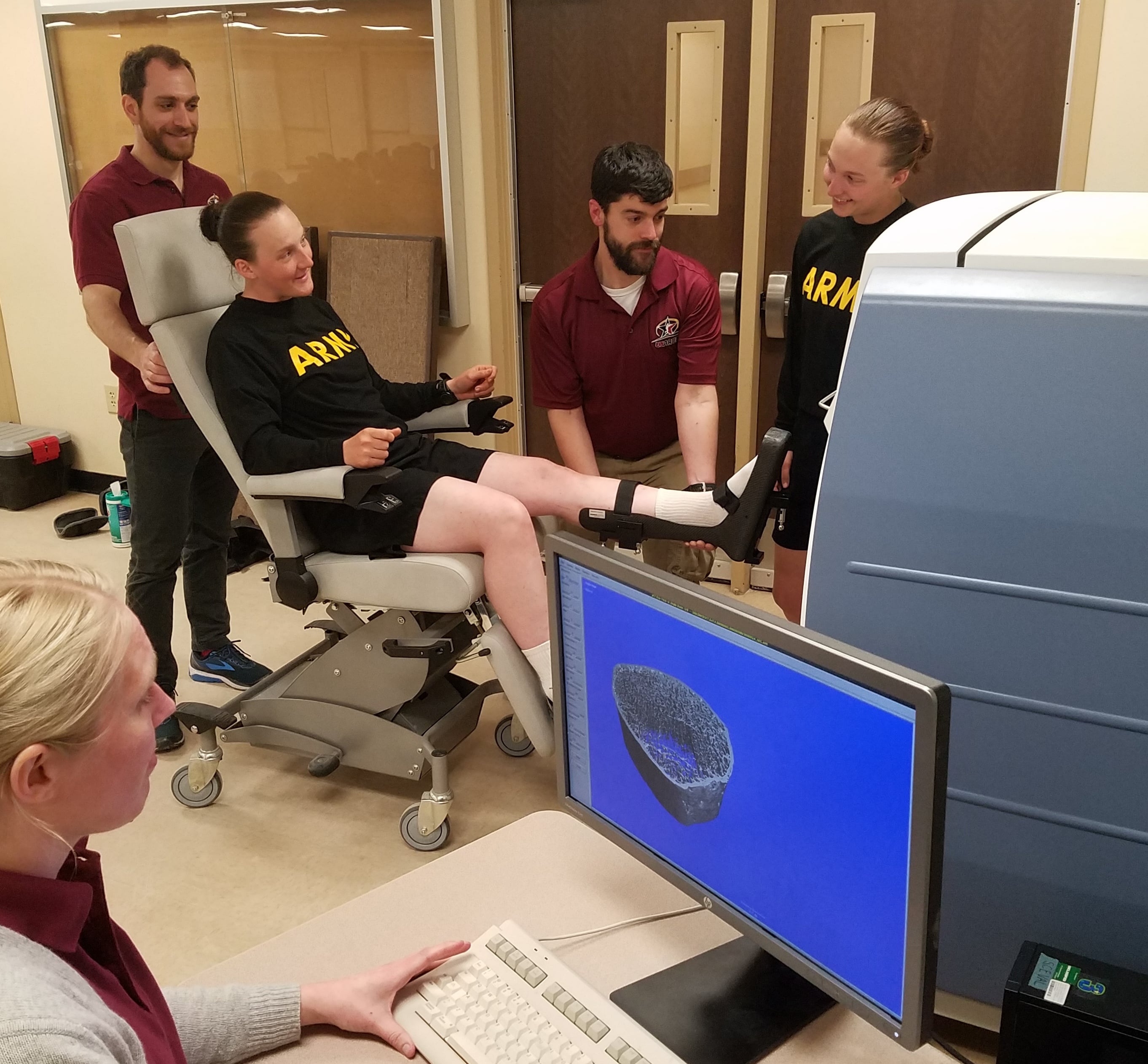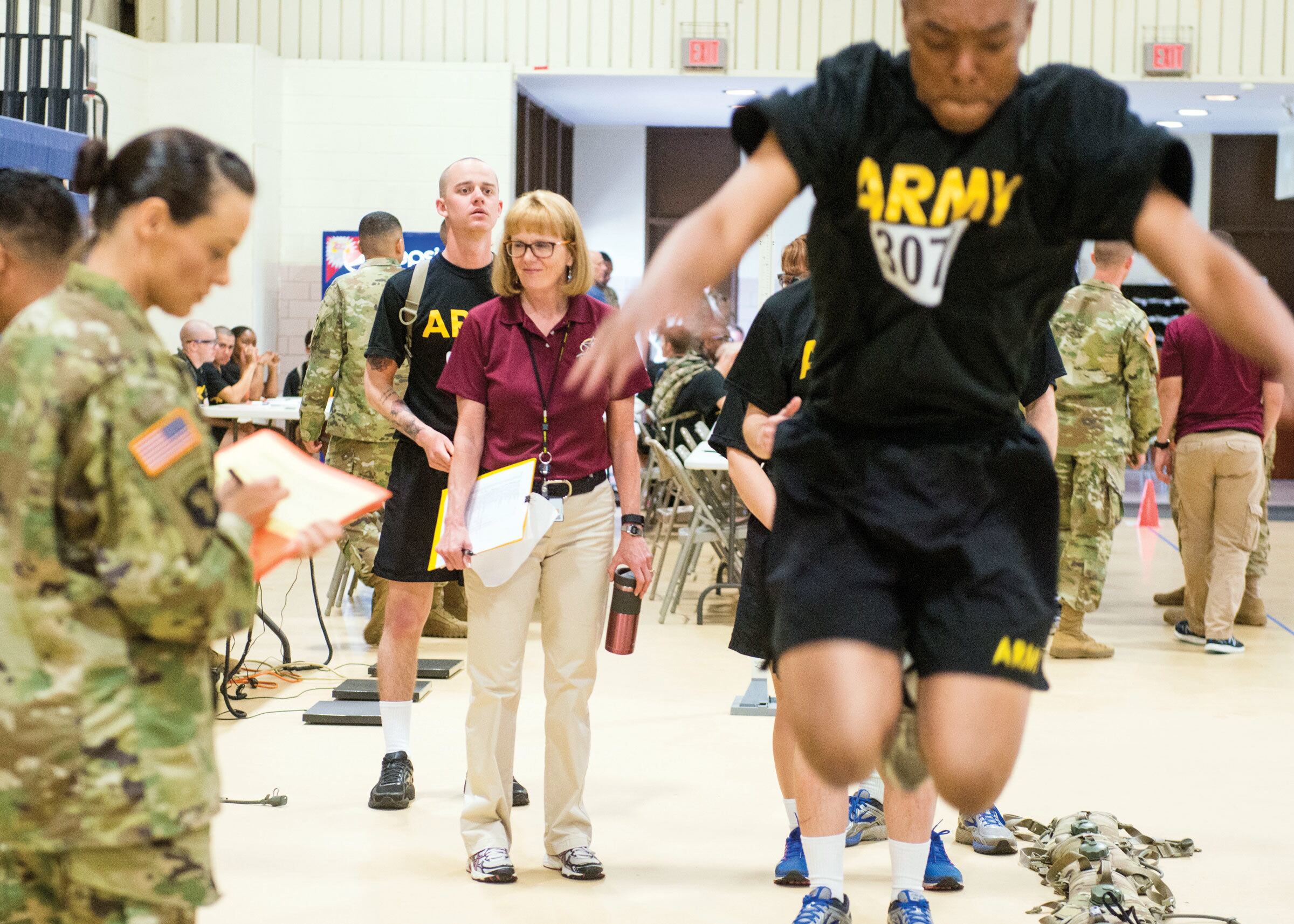NATICK, Massachusetts – Researchers at an Army institute are more than halfway through a major study of what causes injuries in new recruits and what can be done about it.
Army Research Institute of Environmental Medicine, or USARIEM, Research Physiologists Julie Hughes and Stephen Foulis recently spoke with Army Times about the effort, which has so far studied 2,291 recruits with a goal of tracking 4,000 recruits for two years from basic training forward.
Some early findings show that, on average, the overall body weight of recruits didn’t change dramatically during basic training. But both body fat and muscle mass did.
Early data shows that Army recruits through basic training increase their lean muscle mass by about 4 percent and decrease their body fat by about 15 percent.
While women make up less than 20 percent of enlisted recruits, according to a 2018 study on demographics of the U.S. military released by the Council on Foreign Relations, the study is trying to overrepresent the female population in order to answer questions on female soldier injury rates, Hughes said.
But, there are already promising data being analyzed that shows that recruit training benefits female recruits, resulting in lower body fat and higher lean muscle mass than their civilian counterparts in a just a few weeks of training.
The body composition and bone/muscle measurements will continue. But the next step will be a sleep study starting early next year, researchers said.
Hughes and Foulis are in the institute’s Military Performance Division and worked with a team of about 20 researchers have traveled to both Fort Jackson, South Carolina and Fort Sill, Oklahoma to take bone scans and other tests to see what effects basic training is having, both positive and negative, on recruits.
RELATED

The aim is to determine, based on a host of characteristics, which recruits are more susceptible to injury and what interventions Army leaders might be able to take to prevent those injuries.
Ultimately, the goal is to put their data together and create algorithms that can better predict what part of the recruit population my have injury risks or problems in training.
Both researchers emphasized that the work is not to exclude anyone from training due to risks, but instead to identify factors they can adjust to prevent injuries, whether that’s better nutrition, different types of events at different times of the training cycle or other ways to better prepare recruits for periods in which injuries might occur, such as progressive loading for ruck marches.
“How do you alter the training environment for that person or for everyone to do better?” Hughes said.
An added bonus is to push further with the research and find ways to optimize training to increase performance through better preventative steps.
The most recently released data from January showed that the study had conducted 2,000 tibia scans and collected more than 37,172 results from blood tests.
Subjects of the study had to do balance testing and vertical jumps so that researchers could also measure their strength and flexibility.
While there have been many theories behind some of the prevalence of basic training injuries, it wasn’t until recent years that technological advances allowed for detailed measurements to take place.
Scientists can now measure intricate levels of bone density and see how it changes under stress through the nine-week basic training cycle.
The study began in 2017 at Fort Jackson and has expanded to Fort Sill since then, researcher said. Testing throughout the study measures bone density measures and body composition.
In early 2018, the Army introduced the Performance Readiness Bar to add more calcium and other nutrition supplements. Recruits are given the bar as an option to eat but researchers in this study will track if they’re actually consuming it and if there are effects of the extra calcium on injuries.
But what contributes to injury is far more complex than the density of bone or the composition of muscle and fat. That’s why researchers are looking at nutrition, fitness, sex, genetics, menstrual history, neurobehavioral social factors and sleep.
Neurobehavioral factors can be boiled down to somewhat subjective terms such as “grit” or “resiliency,” which are hard to measure but could play large roles in success.

“Maybe somebody who’s really getting after it has more of a risk injury,” Foulis said. “Or maybe because of that they’re at a lower risk of injury.”
The sleep portion of the study will begin early next year, researchers said.
Another question researchers are trying to answer is why female recruits currently suffer higher injury rates than their male colleagues.
The study came from a partnership with the Army’s Training and Doctrine Command and the Center for Initial Military Training.
Both of which had been involved with USARIEM in past work such as the Physical Demands Study. That study and another, the Occupational Physical Assessment Test Validation Study helped inform the OPAT in use today.
An estimated 1,200 trainees took part in the two studies, Mallory Roussel, USARIEM, spokeswoman told Army Times.
Foulis was a part of that project. In the study, researchers took three groups of an estimated 50 soldiers. Those groups completed eight simulated tasks four times over a two-week period.
Some of the tasks included a sandbag carry, casualty evacuation from a vehicle turret, casualty drag, movement under direct fire, stowing ammunition on a tank, loading the tank’s main gun, transferring ammo from field artillery supply vehicles and finishing a 4-mile foot march.
The hands-on collection of initial entry information from recruits should wrap up by late 2020 and the two-year tracking will then end by late 2022. Researchers expect to release the full five-year study results by 2023.
Todd South has written about crime, courts, government and the military for multiple publications since 2004 and was named a 2014 Pulitzer finalist for a co-written project on witness intimidation. Todd is a Marine veteran of the Iraq War.





